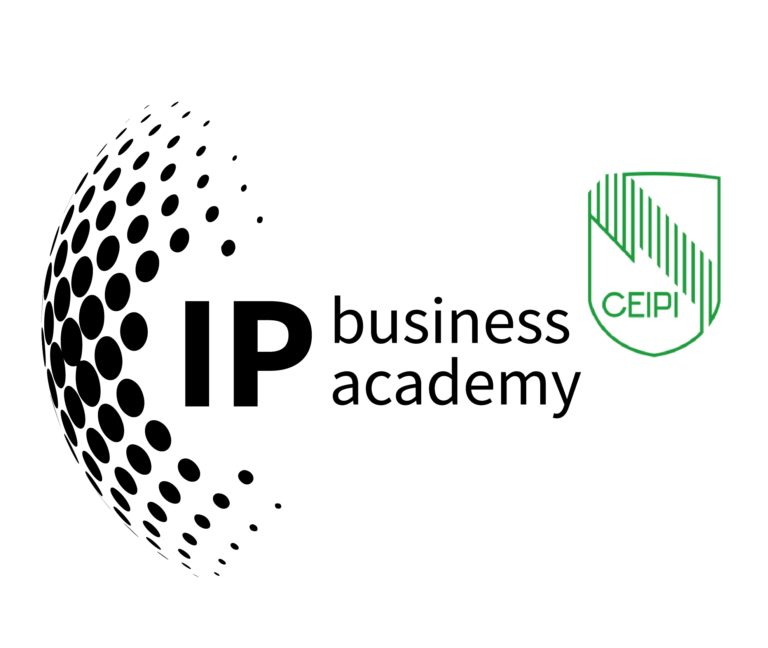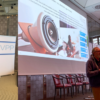First Copied, Then Stopped – How Wasilis Koukounis Used a Patent to Turn the Market Around
In a corner of the global mining machinery market, where it’s all about tons of heavy excavators, massive buckets, and the proverbial teeth of these giants, a quiet but crucial strategy was unfolding. Not on the construction site, but in the conference room. Not with steel and sweat, but with ideas and paragraphs.
The man behind this story: Wasilis Koukounis, a patent attorney with technical acumen and entrepreneurial thinking. When he was in charge of the Mining & Minerals business unit at thyssenkrupp, he faced a challenge familiar to many companies: competitors, especially from Asia, had begun to copy successful products – in this case: excavator teeth. Small components, big loss. But what happened next is a prime example of strategic IP design.
We spoke with Wasilis – about copycats, mounts, and the power of systematic invention.
Question: Mr. Koukounis, what was the trigger that led you to focus more intensively on the topic of IP in the spare parts business?
Wasilis Koukounis: “The ball started rolling when we realized in the Mining & Minerals business unit that our excavator tooth business was under massive pressure. It was about spare parts that wear out daily in use – so-called consumables. Previously a solid business with good margins, but over time, Asian competitors offered significantly cheaper replicas with solid quality. They looked confusingly similar to our excavator teeth. For customers, the difference was hardly noticeable, but for us, it was a significant loss.”
He smiles slightly as he remembers, but you can tell: This was more than just a legal problem – it was a strategic one.
“Many people think of patents primarily as protection for groundbreaking inventions. But in this case, we had to rethink. The question wasn’t: How can we build the best excavator tooth? But: How can we protect the business model itself?”
Question: How did you come up with the idea for the mount? And how did the collaboration with the engineers go?
Wasilis Koukounis: “I sat down with the technology teams and we jointly considered how we could change the playing field. The idea was: What if we don’t look at the excavator tooth in isolation, but at the entire system? So, the tooth and the mount together. If we manage to redesign the connection – i.e., the way the tooth is attached to the excavator bucket – and patent this solution, then that would fundamentally change the market.”
He pauses briefly, as if to emphasize how unconventional this approach was.
“Because that would create a situation in which only our teeth fit on our mount. Any competitor who offers something compatible would automatically risk patent infringement.”
A simple but ingenious idea. The engineers developed a new type of mount, not necessarily better in the traditional sense, but new and non-obvious – and therefore patentable.
The result: The patent family concerning DE 10 2018 203 913 A1.
Question: Were there challenges in implementing this IP strategy?
Wasilis Koukounis: “Definitely. First of all, I had to convincingly promote internally that we don’t just want to build a better tooth, but create a system with IP impact. That’s not trivial, because you’re leaving the classic engineering approach.”
The challenge was twofold: Firstly, technical feasibility. Secondly, the result had to actually be inventive, i.e., meet the legal criteria for a patent.
“Many underestimate how creative you can be in patent law. It’s not about ‘better’ in the everyday sense, but about ‘new’ and ‘non-obvious’ in the legal sense. We established this way of thinking in the team. And it worked.”
Question: What can other companies learn from this project when it comes to IP and business models?
Wasilis Koukounis: “I think the most important learning is: You can actively protect and even redesign business models with IP design. IP is not just defense, but also offense.”
He leans forward slightly.
“The concept of synthetic invention – i.e., targeted invention with the goal of a market entry barrier – is extremely powerful. We didn’t wait for a miracle or for an engineer to accidentally invent something groundbreaking. We strategically said: We need a new mount that is patentable. And we set that up like a development order.”
The result was not just a patent. But a marketable innovation that excluded competitors and stabilized our own business.
Story Conclusion:
What Wasilis Koukounis and his team achieved at thyssenkrupp is a prime example of modern IP strategy. Instead of just reactively defending patents, IP was used proactively as a design tool. The idea of the excavator tooth mount is not a technical sensation – but a legal one. And that’s precisely where the power lies: In a market full of interchangeable products, a well-thought-out patent creates exclusivity. Not through the product itself, but through the way it is integrated into a system.
The next time an excavator somewhere in the world loses its tooth, it could well be that this tooth sits on a mount that is made not only of steel – but of strategic thinking.
Fun fact at the end: The patent family around DE 10 2018 203 913 A1 has already had three owners since its filing date in 2019; from thyssenkrupp AG to FLSmidth A/S to the current rights holder Koch Solutions GmbH. An impressive proof that clever IP design in the heavy industry sector creates value that outlasts company boundaries many times over.
About the interviewee
 Wasilis Koukounis is a mechanical engineer with extensive expertise in traditional mechanical engineering and a special focus on computer-implemented inventions. As a member of the executive board of the Association of German Engineers (VDI) NRH BV, he also leads the Working Group on Intellectual Property Law and moderated the annual VDI/VPP seminar.
Wasilis Koukounis is a mechanical engineer with extensive expertise in traditional mechanical engineering and a special focus on computer-implemented inventions. As a member of the executive board of the Association of German Engineers (VDI) NRH BV, he also leads the Working Group on Intellectual Property Law and moderated the annual VDI/VPP seminar.



